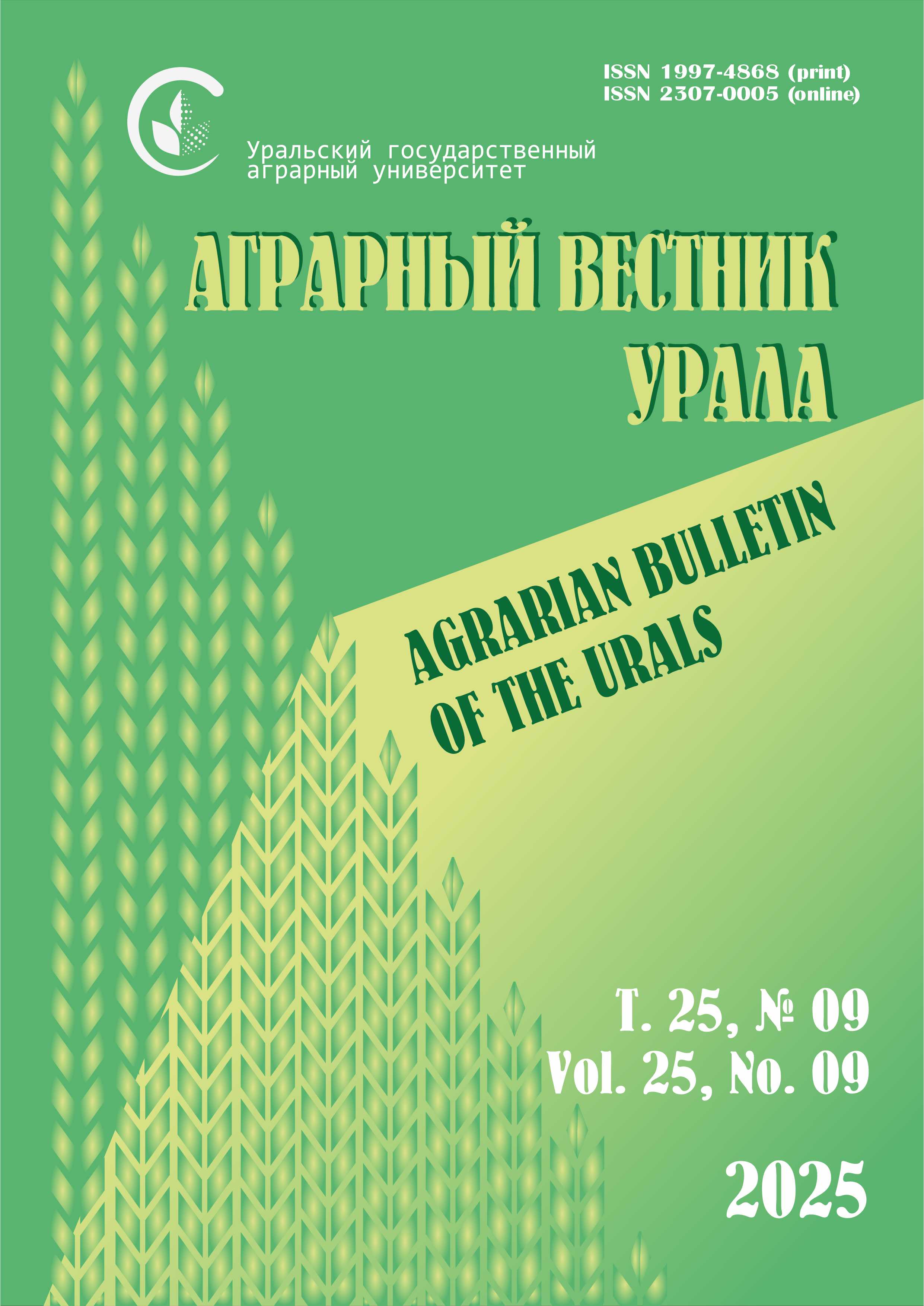V. V. Golembovskiy, M. B. Ulimbashev
North Caucasus Federal Agricultural Research Center, Mikhaylovsk, Stavropol Territory, Russia
E-mail: This email address is being protected from spambots. You need JavaScript enabled to view it.
Volume 25 No. 5
Date of paper submission: 08.11.2024, date of review: 18.03.2025, date of acceptance: 07.04.2025.
Published: 05/31/2025
Abstract. The purpose of the research is to establish the quality indicators of beef obtained from young cattle of the Kazakh White-Headed breed of different origins. Methods. The control group included bulls obtained from mating cows and bulls of the Kazakh white-headed breed of the local population, bred in the peasant farm Chochaev R. Kh., in the 1st experimental group – peers obtained from mating cows of the local population and imported bulls from the agricultural production cooperative collective farm “Gigant”, in the 2nd experimental group – obtained as a result of mating cows and bulls originating from animals from the breeding plant. To study the chemical composition and biological value of beef, product samples (3 from each group) were taken as a result of slaughtering young animals aged 18 months. Results. All groups of young bulls were characterized by practically the same chemical composition of the average sample of minced meat. Only in the amount of ash in the samples did individuals of the 2nd experimental group reliably exceed their peers of the control group by an average of 0.03 abs.% (P > 0.95). The content of dry substances in the longest back muscle of young bulls of the 1st experimental group was higher than that of their peers of the control (by 0.29 abs.%) and 2nd experimental (by 0.36 abs.%, P > 0.95) groups, which is probably due to the greater localization of fat. The highest concentration of essential amino acid was found in the average sample of carcass flesh of the 1st experimental group of bulls (by 3.6–7.2 mg%) and the absence of significant intergroup differences in the oxyproline level (no more than 0.4 mg%), which provided them with, albeit unreliable, superiority in the protein quality indicator, which amounted to 0.07–0.14 units. Trends and patterns characteristic of the content of oxyproline and tryptophan, their ratio in the average sample of carcass flesh, took place in the longest back muscle of the experimental groups of bulls. Thus, the products obtained from all groups of bulls can be classified as high-quality, with a high level of protein quality indicator.
Keywords: Kazakh white-headed breed, bulls, origin, beef, chemical composition, biological value
For citation: Golembovskiy V. V., Ulimbashev M. B. Quality indicators of products of Kazakh white-headed cattle of different genotypes. Agrarian Bulletin of the Urals. 2025; 25 (05): 728‒738. https://doi.org/10.32417/1997-4868-2025-25-05-728-738 (In Russ.)
Download the full text of the article












